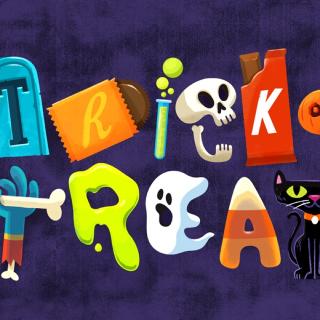
介绍:
hello, everyone, it's been long, welcome to the English show presented by only for the Top One in Beijing New Oriental School, I'm your host, Sam. Today we will talk something about Halloween, what that holidayish Halloween is. Are you ready with this spooky music, okay, let's start.On October 31ST, dozens of children dressed in costumes knock on their neighbors’ doors and yell, “Trick or Treat” when the door opens. Pirates and princesses, ghosts, and popular heroes and heroines of the day all hold bags open to catch the candy or other goodies
that the neighbors drop in. As they give each child a treat, the neighbors exclaim over the costumes and try to guess who is under the masks.
Like some other American holidays, Halloween customs evolved from a mix of traditions. The word“Halloween” comes from the nameof a holiday from the 800s AD,called All Hallows’ Eve. This was the day and evening before All Saints’ Day, a holy day that was celebrated on November 1st. The origins of Halloween go back even further, however. In ancient times, October 31st was the eve of the Celtic New Year. The Celts, who lived over
2,000 years ago, were the ancestors of the present-day Irish, Welsh, and Scottish people. On this day, the Celts held the festival of Samhain in honor of the Celtic lord of the dead. In the evening, Samhain allowed ghosts to walk and mingle with the living, or so the Celts thought. The townspeople baked food all that day, and when night came, they dressed up in animal heads and skins, and attended a great bonfire, set by their priests, the Druids. Hoping that the ghosts would leave peacefully before the new year, the people carried the food they had made to the edge of town and left it for the spirits to find. The celebration of Samhain also marked the end of the harvest season, and the beginning of the cold, dark time of year.
Much later, when October 31 was no longer the last day of the year, autumn festivals continued to be held, celebrating the harvest and honoring the dead. Over time, however, Halloween became a celebration mostly for children. “Ghosts” went from door to door asking for treats, or else a trick would be played on the owners of the house. When millions of Irish, British, and others from Celtic regions immigrated to the United States in the 1840s, the traditions came with them.
Today, many schools plan Halloween festivities, and some neighborhoods hold parties, often called “block parties” which are popular among young and old alike. More recently, adults have begun to celebrate Halloween, too. They dress up like historical or political figures, movie stars, or cartoon characters, and go to masquerade parties or city-sponsored street parties. In many towns and cities, costumed children and their parents gather at shopping malls early in the evening. Stores and businesses give parties, with games and treats for the children. Teenagers enjoy costume dances at their schools, and the more outrageous the costume the better! I didn't tell you everything about this western-holiday widely celebrated around the world yet, some work should be done by yourself to horize your sight of view on what you are really interested in. I suppose to end today's show, by the way, Happy Halloween on Oct.31st, see you next time, bye!
上一期: 优才英语秀-Is Hilary Clinton a real person?-Freddie李冠学
下一期: Tim Duncan: Consistence Greatness-Michelle
下一期: Tim Duncan: Consistence Greatness-Michelle
大家还在听

